Digestive System
Digestive System Revision
Digestive System
The digestive system is an important organ system that uses digestive enzymes and mechanical methods to break down all different kinds of food so it can be absorbed into the blood and used around the body. We can test foods for what molecules they contain using a series of chemical tests.
Digestion of Food
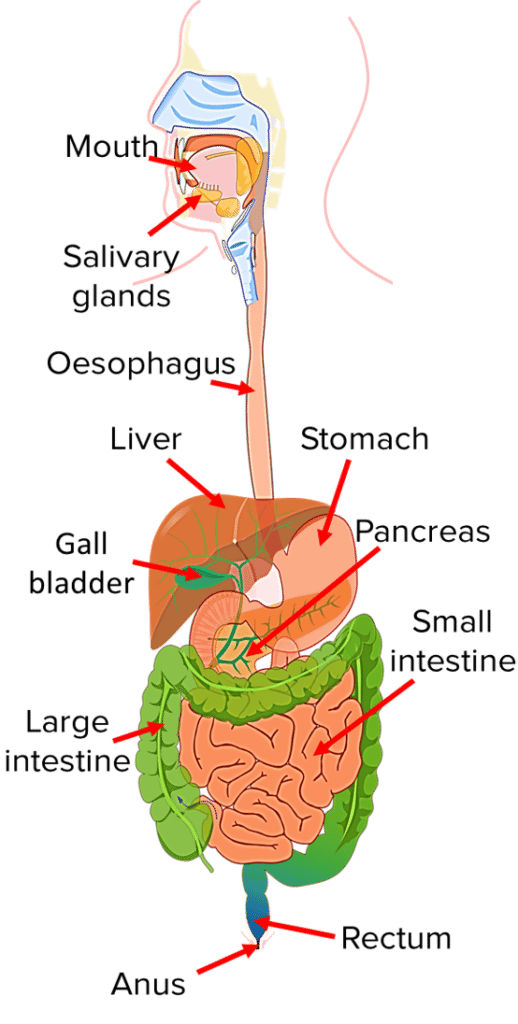
Food enters the body in the mouth. Mechanical digestion occurs by the teeth which breaks it into small pieces. Amylase in the saliva is secreted into the mouth by the salivary glands to start breaking down starch from the food into maltose. It then is sent down the oesophagus to the stomach.
The stomach churns and pummels the food and digests proteins with the pepsin. Pepsin requires acidic conditions in order to work so the stomach is full of hydrochloric acid which makes the stomach approximately pH2 . The hydrochloric acid also kills most of the bacteria in the food.
The food is then sent to the small intestine where bile and enzymes are released:
- Bile is made in the liver, stored in the gall bladder and released into the small intestine. It neutralises the acid from the stomach to create a pH suitable for the enzymes of the small intestine and emulsifies fats so they can be more easily digested by lipase enzymes.
- Lots of digestive enzymes are made in the pancreas and then released into the small intestine. Amylase digests starch into maltose, protease digests proteins into amino acids and lipase digests lipids into fatty acids and glycerol.
Food molecules are now much smaller so can be absorbed through specialised intestinal walls and into the bloodstream.
Food passes through the large intestine where excess water is absorbed from the food. It is finally stored in the rectum as faeces and excreted from the body through the anus.
Required Practical
Testing food samples for carbohydrates, proteins and lipids.
This practical aims to identify the presence of different food molecules in a sample of food. The investigation is qualitative not quantitative so will not tell you how much of each substance there is, only if it is there or not. You will need to remember how to do each of these tests.
Preparing the food samples
Before beginning the experiment, you must prepare the food you wish to test.
This is done by breaking up the food with a pestle and mortar, dissolving some of it in distilled water and then filtering out any remaining solid pieces with a funnel lined with filter paper.
Doing the tests
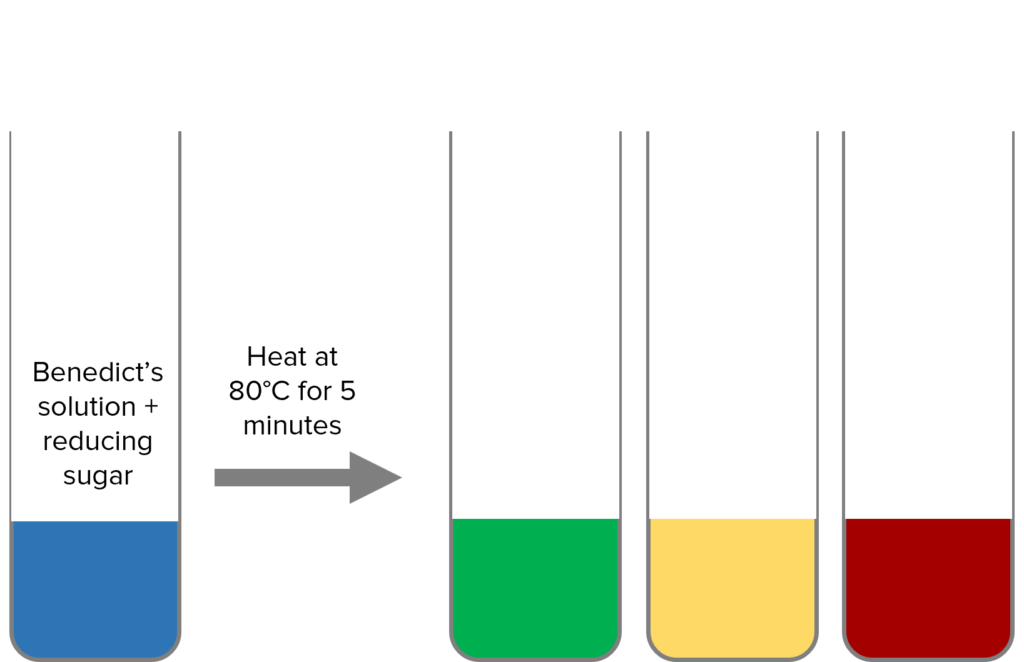
Benedict’s test for reducing sugars:
- Add a few drops of Benedict’s solution to a test tube containing some of the prepared food sample.
- Put the test tube in a water bath at 80\text{°C} for 5\text{ minutes}.
- Take note of any colour change.
The blue Benedict’s solution will turn green, yellow or brick red if the solution contains a reducing sugar. The colour it changes to will depend on how much sugar there is in the food.
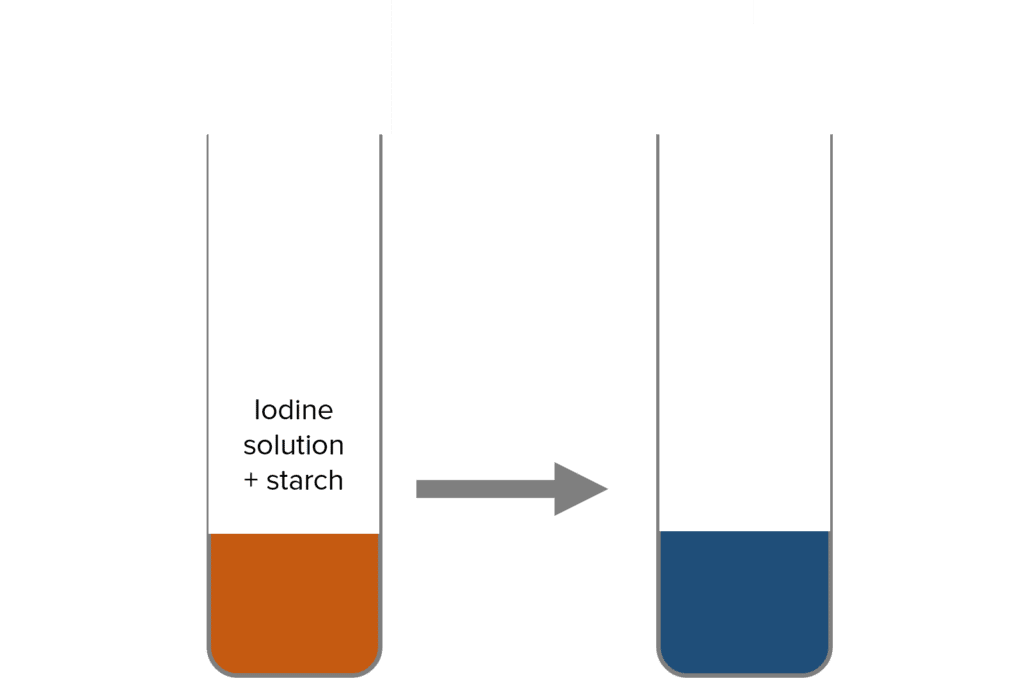
Iodine test for starch:
- Add a few drops of iodine solution to a test tube containing some of the prepared food sample.
- Gently shake the test tube to mix.
- Observe any colour changes.
The brown-orange solution will turn blue-black in the presence of starch.
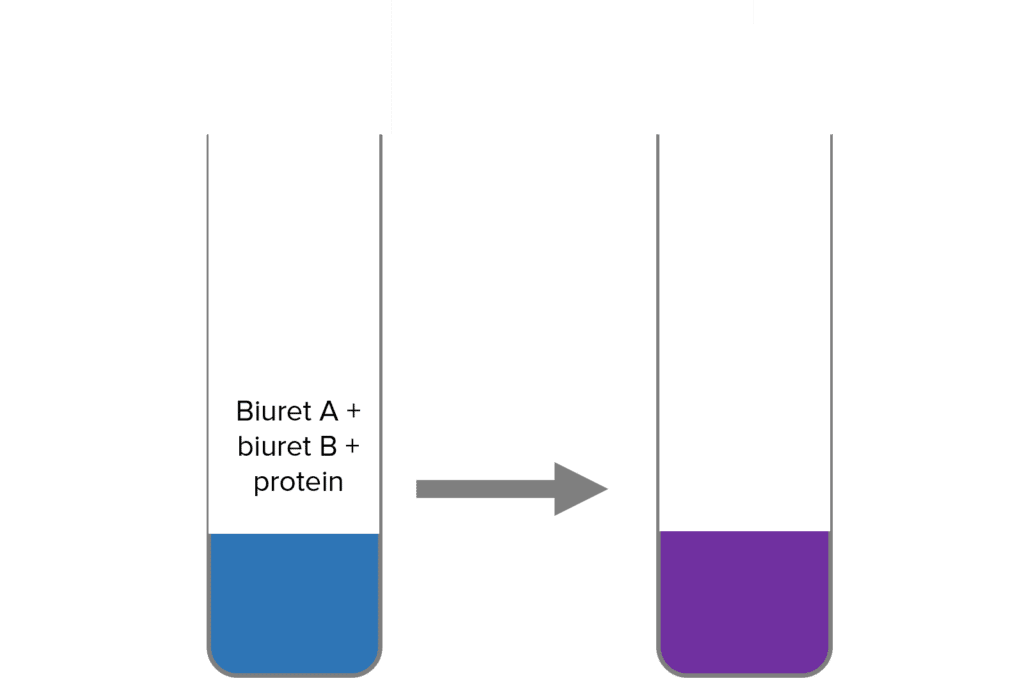
Biuret test for proteins:
- Add a few drops of biuret A and biuret B to a test tube containing some of the prepared food sample.
- Shake the test tube gently to mix.
- Look for any colour changes.
If a protein is present, the solution will change from blue to purple.
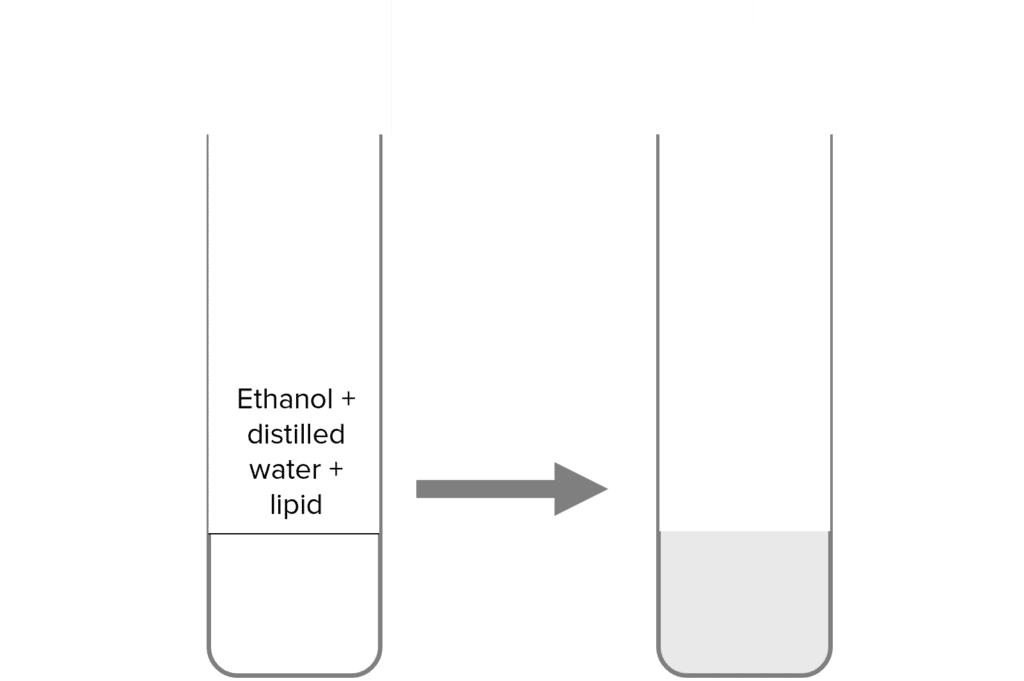
Emulsion test for lipids:
- Add a few drops of ethanol and a few drops of distilled water to a test tube containing the prepared food sample.
- Shake gently to mix the contents of the test tube.
- Observe any changes.
If a lipid is present in the sample, the colourless solution will turn into a cloudy white emulsion.
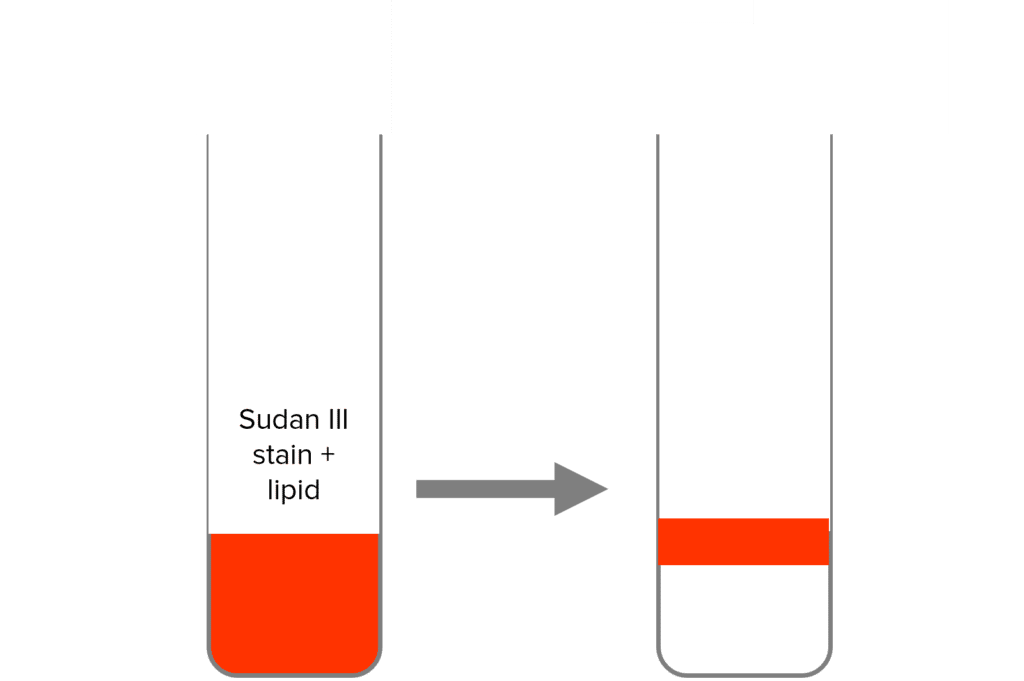
Sudan III test for lipids:
- Add a few drops of Sudan III stain to a test tube containing the prepared food sample.
- Shake the test tube gently.
- Observe any changes in the test tube.
If a lipid is present, the solution will separate into 2 layers. The top layer will be the lipid and will be stained red by the Sudan III stain.
Digestive System Example Questions
Question 1: Describe how and where starch is broken down in the human digestive system.
[3 marks]
Starch is broken down into maltose by the enzyme amylase.
Salivary glands release saliva containing amylase into the mouth for digestion.
Amylase is also made in the pancreas and gets released into the small intestine where starch can be further digested.
Question 2: Name 2 purposes of the hydrochloric acid found in the stomach.
[2 marks]
Provides an acidic environment for pepsin to work.
Kills bacteria from food.
Question 3: Describe the test used to identify the presence of proteins in a piece of food.
[5 marks]
- Prepare the food sample.
- This is done by breaking up the food with a pestle and mortar, dissolving it in distilled water and filtering out any remaining solid pieces.
- Add a few drops of biuret A and biuret B to the sample.
- Shake the test tube to mix it.
- If a protein is present, the solution will change from blue to purple.
Digestive System Worksheet and Example Questions
Human Digestive System Questions
GCSEOfficial MME
MME Premium Membership
£19.99
/monthLearn an entire GCSE course for maths, English and science on the most comprehensive online learning platform. With revision explainer videos & notes, practice questions, topic tests and full mock exams for each topic on every course, it’s easy to Learn and Revise with the MME Learning Portal.
Sign Up Now



